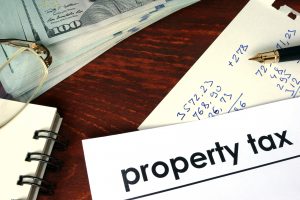September 04, 2018 – Long Island
 Nassau County is currently performing a countywide revaluation to establish a new assessment roll on January 2nd, 2019. Appraisal firms are individually valuing all properties, resulting in new assessments for all 424,000 properties in Nassau County. Notices of these new values will arrive in early November, with the actual tentative assessment roll published on January 2nd, 2019.
Nassau County is currently performing a countywide revaluation to establish a new assessment roll on January 2nd, 2019. Appraisal firms are individually valuing all properties, resulting in new assessments for all 424,000 properties in Nassau County. Notices of these new values will arrive in early November, with the actual tentative assessment roll published on January 2nd, 2019.
The upcoming notices are sure to provide “sticker shock” to many commercial and residential property owners. However, owners will be relieved to learn they will not be fully taxed on their new assessments. Under the Real Property Tax law, homeowners in Nassau County can only be taxed at 6% increases in value each year with an overall cap of a 20% over five years. Commercial property owners will see any increases in their value phased in over five years at 20% per year under a related subsection of the law. So, while a homeowner may receive a notice that has a market value twice as high as their current assessment, they can take solace in the fact that the resulting bill will only be based on a 6% increase in their taxable assessment. Similarly, a commercial owner could see a $10 million assessed value double to $20 million, but his taxable assessment will be based on $12 million resulting from only 20% of the increase becoming immediately taxable.
The legislative purpose of these “phase-ins” of new assessments is to prevent homeowners or commercial owners from seeing wild fluctuations in their taxes compared to previous tax bills. This allows owners to plan ahead and budget for annual increases at figures that are more manageable. The negative aspect is that even though the county will have spent time and money updating the assessment roll, many property owners will not be taxed at the full new assessment. This results in a wide disparity between owners who are not having their tax assessment phased in as compared to owners who are having their assessment phased in at an artificial number falling somewhere between their prior year’s assessment and the new one published this coming January.
Property owners will be relieved to find that they have time to grieve their taxes and, if warranted, potentially have their assessments reduced prior to the tax bills being issued. The assessment roll published January 2nd will impact tax bills issued in October 2020 for school taxes and January 2021 for county, town and special districts (also known as their general bill). This allows time for tax grievances to be filed by the March 1st, 2019 deadline and be pursued prior to the assessment roll becoming final on April 1st, 2020.
The January 2019 assessment roll will revalue all properties for the first time since 2010. Leadership in the prior administration had made the conscious decision to freeze the assessment roll in 2011 and each year thereafter. Aside from new construction adding value to the assessment roll, the largest changes were resulting from assessments decreasing because of successful grievances. The net result was higher tax rates for all. While the new assessment roll may have limitations on the taxable assessments for each property, it will also provide an opportunity for increased assessments for the first time in almost a decade.
The new assessment roll will also have the goal to establish accurate values on properties that may be over-assessed but previously had not availed themselves of the grievance process. The appraisers working on the new assessments are tasked with bringing values in line with current trends. For example, an analysis performed on a retail property in 2010 will certainly look different in 2019 with the economic landscape – particularly with regard to retail – having changed dramatically since then.
The revaluation, if implemented correctly, can be a positive step towards correcting the assessment system. It remains to be seen whether the new assessments will result in more equity or create additional inequities. However, these adjustments still do not correct the underlying problem that taxpayers in Nassau County pay some of the highest taxes in the country.
The county executive recently reversed the former administration’s decision not to send notices of tentative assessed value via regular mail. In order to make the process as transparent as possible, those notices will be available online, but also distributed via mail, allowing all owners to quickly and easily obtain their new assessments. This transparency is critical as owners must analyze their new values and make sure their property was valued accurately. Particularly those properties that find themselves in the process of having their tax burden escalated over time, there must be ample opportunity to avail themselves of the grievance process to make sure they are fairly assessed and required to carry only their fair share of the tax burden.
Brad Cronin, Esq., and Sean Cronin, Esq., are partners at Cronin & Cronin Law Firm, PLLC, Mineola, N.Y.
Click here for full article
